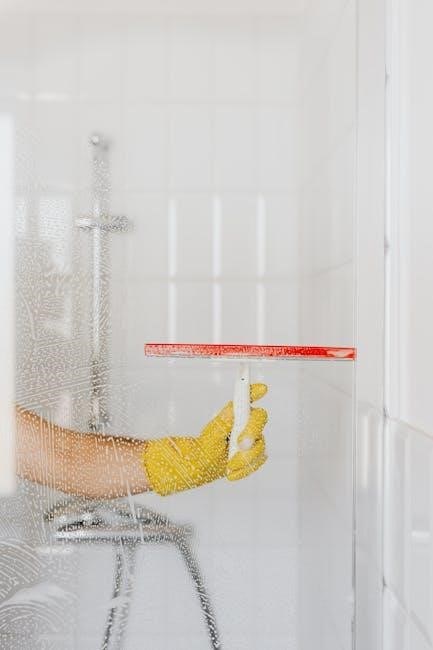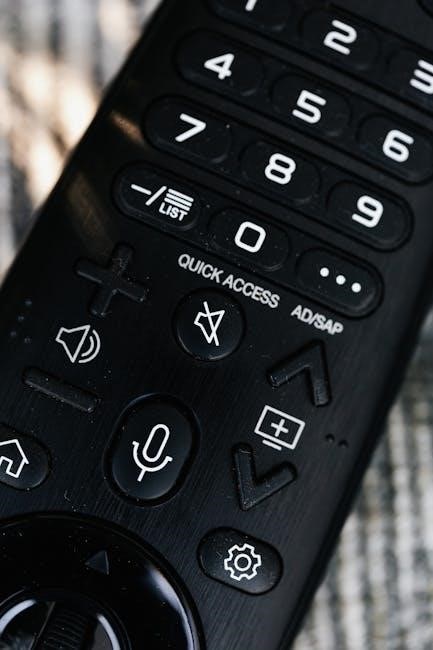2023 chevy tahoe owner’s manual
The 2023 Chevy Tahoe offers a robust suite of features, ensuring a connected and supported ownership experience․ Glo Nigeria’s customer service, accessible via shortcodes like 121 or 200, mirrors Chevrolet’s commitment to readily available assistance․
Overview of the Vehicle
The 2023 Chevrolet Tahoe is a full-size SUV designed for families and those needing substantial passenger and cargo space․ It boasts a powerful engine, offering a comfortable ride and impressive towing capacity․ Like accessing Glo Nigeria’s customer support through quick codes (121 or 200 for balance checks), the Tahoe prioritizes user-friendly operation․
This vehicle provides three rows of seating, typically accommodating up to eight passengers, depending on configuration․ The Tahoe’s interior is designed with durability and comfort in mind, featuring quality materials and ample technology․ Similar to Glo’s 24/7 availability, Chevrolet aims for consistent reliability․

Available in various trims, the Tahoe allows buyers to customize their vehicle with features like advanced safety systems, premium audio, and enhanced infotainment․ Understanding its systems, much like navigating Glo’s shortcodes for services, is key to maximizing the Tahoe experience․ It’s a vehicle built for both daily commutes and long road trips․
Key Features and Updates for 2023
The 2023 Tahoe introduces several enhancements, building upon its already strong foundation․ A notable update is the expansion of safety features, including enhanced Automatic Emergency Braking and Lane Keep Assist․ This mirrors Glo Nigeria’s commitment to accessible support, like their 24/7 customer care lines․
Infotainment receives a boost with the Chevrolet Infotainment 3 system, offering a larger touchscreen and improved connectivity – including wireless Apple CarPlay and Android Auto․ Like dialing a shortcode for quick Glo service, these features streamline the driving experience․
Further refinements include updated interior trim options and new exterior color choices․ The Tahoe continues to offer a powerful engine lineup and available four-wheel drive․ Chevrolet’s focus on user-friendliness, akin to Glo’s easy-to-remember codes, ensures a satisfying ownership experience․ These updates solidify the Tahoe’s position as a leading full-size SUV․

Understanding Your Tahoe’s Systems
Familiarizing yourself with the Tahoe’s core systems is crucial for optimal performance, much like knowing Glo’s shortcodes for swift assistance and account management․
Engine and Transmission
The 2023 Chevy Tahoe boasts a powerful engine lineup, primarily featuring a 5․3L EcoTec V8 engine, delivering a balance of capability and efficiency․ This engine is paired with a smooth-shifting 10-speed automatic transmission, designed to optimize fuel economy and provide responsive acceleration․ A 6․2L EcoTec V8 engine is also available, offering even greater power for towing and hauling needs, also coupled with the 10-speed automatic․

Understanding the engine’s operation is vital; regular oil changes, as recommended in the maintenance schedule, are paramount․ The transmission requires periodic fluid checks and replacements to ensure longevity and proper function․ Like accessing Glo Nigeria’s customer support through dedicated lines, knowing your Tahoe’s engine and transmission specifics empowers confident operation․ Familiarize yourself with the engine’s performance characteristics and the transmission’s shift points for a refined driving experience․ Proper maintenance, detailed in the owner’s manual, will maximize the lifespan of these critical components․
Drivetrain Options (2WD, 4WD, AWD)
The 2023 Chevy Tahoe offers versatile drivetrain options to suit diverse driving conditions and preferences․ Rear-Wheel Drive (2WD) is standard, providing efficient operation for typical on-road driving․ Four-Wheel Drive (4WD) is available, enhancing traction in challenging terrains like snow or gravel, selectable for optimal performance․ AutoTrac two-speed transfer case is standard with 4WD․
Furthermore, an available Four-Wheel Drive with an automatic mode seamlessly transitions between 2WD and 4WD as needed, similar to the ease of accessing Glo Nigeria’s support via multiple channels․ Understanding each system’s capabilities is crucial․ Regular inspection of 4WD components is recommended․ The owner’s manual details proper operation and maintenance for each drivetrain․ Choosing the right drivetrain maximizes capability and safety, ensuring a confident driving experience regardless of the road conditions encountered․
Braking System and Stability Control
The 2023 Chevy Tahoe’s braking system prioritizes safety and control․ It features four-wheel disc brakes with ABS, ensuring optimal stopping power and preventing wheel lockup during emergency maneuvers; Electronic Stability Control System (ESC) actively monitors vehicle motion, intervening to help maintain directional control and prevent skidding, much like readily available customer support from Glo Nigeria․
Additional features include Brake Assist, which provides maximum braking force during hard stops, and Traction Control System (TCS), minimizing wheel spin during acceleration․ The system also incorporates automatic emergency braking․ Regular brake inspections are vital for peak performance․ The owner’s manual details proper brake maintenance procedures․ Understanding these systems enhances driver confidence and contributes to a safer driving experience for all occupants․
Suspension and Ride Quality
The 2023 Chevy Tahoe boasts a sophisticated suspension system designed for a comfortable and controlled ride․ It utilizes an independent front suspension and a multi-link rear suspension, effectively absorbing road imperfections․ Available Magnetic Ride Control adjusts damping in real-time, responding to changing road conditions for an exceptionally smooth experience, similar to the responsive support offered by Glo Nigeria’s customer care lines․
Air Ride Adaptive Suspension is also available, allowing drivers to adjust ride height for improved comfort or increased ground clearance․ Proper tire inflation, as outlined in the owner’s manual, is crucial for optimal ride quality and handling․ Regular suspension component inspections are recommended to ensure continued performance and safety․ This system balances capability with a refined driving experience․
Interior Features and Controls
The Tahoe’s cabin prioritizes comfort and technology, mirroring Glo Nigeria’s accessible support channels; intuitive controls and premium materials enhance the driving experience for all occupants․
Seating and Interior Layout
The 2023 Chevy Tahoe boasts a spacious and versatile interior, designed to comfortably accommodate up to eight passengers depending on the configuration․ Multiple seating options are available, including standard cloth, leather-appointed, and premium leather surfaces․ Second-row passengers can choose between a bench seat or captain’s chairs, influencing overall seating capacity․ Power-folding second and third-row seats provide easy access to the rear cargo area, maximizing storage flexibility․
The layout prioritizes passenger comfort with ample legroom and headroom in all three rows․ Interior trim options range from stylish wood accents to modern metallic finishes, allowing owners to personalize their Tahoe; Attention to detail is evident throughout the cabin, with thoughtfully placed storage compartments and convenient features like available heated and ventilated front seats․ Like Glo Nigeria’s readily available customer support, the Tahoe’s interior is designed with user convenience in mind, ensuring a pleasant experience for both driver and passengers․
Infotainment System – Chevrolet Infotainment 3
The Chevrolet Infotainment 3 system is the central hub for connectivity and entertainment within the 2023 Tahoe․ Featuring a responsive touchscreen display – available in sizes up to 10․2 inches – it offers intuitive control over vehicle functions and media․ Wireless Apple CarPlay and Android Auto compatibility are standard, allowing seamless smartphone integration․ The system supports voice recognition, enabling hands-free operation of navigation, music, and communication features․
Multiple USB ports and a built-in Wi-Fi hotspot cater to passenger connectivity needs․ An available rear-seat entertainment system with dual 12․6-inch touchscreens keeps rear occupants engaged on long journeys․ Similar to Glo Nigeria’s accessible shortcodes for account management, the Infotainment 3 system is designed for user-friendly operation, providing a connected and enjoyable driving experience․ Regular software updates ensure the system remains current with the latest features and improvements․
Navigation System Operation
The 2023 Tahoe’s available navigation system provides accurate and up-to-date guidance, enhancing your travel experience․ Utilizing a high-resolution map display, the system offers turn-by-turn directions, real-time traffic updates, and points of interest (POI) searching․ Destination input can be achieved through voice recognition, address entry, or POI selection․ The system learns your frequently visited locations for quicker route planning․
Similar to how Glo Nigeria offers multiple contact avenues for customer support, the Tahoe’s navigation provides alternative routing options to avoid congestion․ Map views can be customized, and the system integrates seamlessly with the Chevrolet Infotainment 3 system․ Regular map updates, downloadable over-the-air, ensure accuracy․ The system also displays lane guidance and speed limit information, promoting safer driving․ It’s a user-friendly tool for confident navigation․
Climate Control System
The 2023 Chevy Tahoe’s climate control system is designed for optimal comfort, offering both manual and automatic settings․ Separate temperature zones allow for personalized climate preferences for driver, passenger, and rear occupants․ Intuitive controls manage fan speed, temperature, and air distribution․ The system features a robust air filtration system, enhancing cabin air quality․
Much like Glo Nigeria provides 24/7 customer care access, the Tahoe’s climate control offers consistent comfort․ Rear-seat passengers can often adjust their own temperature settings, promoting a pleasant environment for all․ Defrost and defog functions quickly clear windshield obstructions․ Remote start functionality allows pre-conditioning the cabin before entering the vehicle․ The system efficiently manages heating and cooling, ensuring a comfortable ride in all weather conditions, mirroring reliable service․
Connectivity – Bluetooth, USB, Wireless Apple CarPlay/Android Auto
The 2023 Chevy Tahoe boasts extensive connectivity features, seamlessly integrating your digital life․ Bluetooth allows for hands-free calling and audio streaming․ Multiple USB ports cater to charging and data transfer needs for various devices․ Wireless Apple CarPlay and Android Auto provide smartphone integration, displaying apps on the vehicle’s touchscreen․
Similar to Glo Nigeria’s shortcodes offering instant access to account information, the Tahoe’s connectivity is designed for convenience․ Voice commands enable control of music, navigation, and calls without taking your eyes off the road․ The system supports over-the-air updates, ensuring the latest features and improvements․ Staying connected is effortless, mirroring the ease of reaching customer support․ These features enhance the driving experience, providing both entertainment and essential functionality․

Safety Features and Driver Assistance
The Tahoe prioritizes occupant protection, offering advanced systems like Forward Collision Alert and Automatic Emergency Braking, akin to Glo’s 24/7 support access․
Airbag System
Your 2023 Chevy Tahoe is equipped with a comprehensive airbag system designed to provide crucial protection in the event of a collision․ This system includes dual-stage frontal airbags for both driver and front passenger, designed to adjust deployment force based on the severity of the impact and occupant size․ Side-impact airbags are integrated into the front seats, offering torso protection during side collisions․
Additionally, roof rail airbags, providing head protection for all rows, are standard․ The Tahoe also features a driver’s knee airbag and a passenger-side knee airbag, further enhancing lower body protection․ It’s vital to remember airbags are supplemental restraints and work best when used with seat belts․ Always ensure all occupants are properly restrained․ The airbag system is designed to function automatically, but understanding its components and limitations, as detailed in the full owner’s manual, is crucial for safe operation․ Like readily available Glo customer support, the airbag system is there when you need it most․
Forward Collision Alert
The 2023 Chevy Tahoe’s Forward Collision Alert system is a crucial component of its safety suite, designed to help prevent or mitigate frontal collisions․ Utilizing camera technology, the system continuously monitors the vehicle’s surroundings, scanning for potential hazards ahead․ If a potential frontal collision with a detected vehicle is identified, the system provides escalating alerts․
Initially, a visual alert will appear on the driver information center, followed by an audible warning․ Should the driver not react, the system can automatically apply the brakes to reduce the severity of the impact or even avoid the collision altogether․ It’s important to understand this is an assistance feature, not a replacement for attentive driving․ Like contacting Glo customer care for assistance, this system is there to support, not replace, responsible operation․ Familiarize yourself with the system’s settings and limitations as detailed in the owner’s manual․
Automatic Emergency Braking
The 2023 Chevy Tahoe’s Automatic Emergency Braking (AEB) builds upon the Forward Collision Alert, providing an active intervention to help avoid or reduce the severity of frontal collisions․ When Forward Collision Alert detects a potential crash and the driver doesn’t respond, AEB automatically applies the brakes․ This system functions at various speeds and can even detect pedestrians and cyclists in certain situations․
The intensity of braking applied depends on the severity of the potential impact․ It’s crucial to remember AEB is an assistive feature, and drivers must remain attentive and prepared to take control․ Similar to readily accessing Glo Nigeria’s customer support via shortcodes, AEB is a readily available safety net․ Consult the owner’s manual for detailed information regarding system limitations, operating conditions, and maintenance requirements to ensure optimal performance and understand its capabilities fully․
Lane Keep Assist with Lane Departure Warning
The 2023 Chevy Tahoe’s Lane Keep Assist with Lane Departure Warning (LDW) enhances driver awareness and safety․ LDW alerts the driver if the vehicle begins to drift unintentionally out of its lane․ If no corrective action is taken, Lane Keep Assist gently steers the vehicle back into its lane․ This system utilizes a forward-facing camera to detect lane markings and operates at speeds above a certain threshold, as detailed in the owner’s manual․
Like the responsive customer service offered by Glo Nigeria through various channels, this feature provides an extra layer of support․ It’s important to note that Lane Keep Assist is not a substitute for attentive driving․ Drivers should always maintain control of the vehicle and be prepared to override the system․ Understanding the system’s limitations and proper operation, as outlined in the manual, is vital for safe and effective use․

Adaptive Cruise Control
The 2023 Chevy Tahoe’s Adaptive Cruise Control system automatically adjusts vehicle speed to maintain a pre-set following distance from the vehicle ahead․ Utilizing forward radar technology, it slows down or speeds up the Tahoe as traffic conditions change, even bringing it to a complete stop in some scenarios․ Drivers can adjust the following gap and set a maximum speed, providing a more relaxed driving experience on highways․
Similar to the readily available support from Glo Nigeria’s customer care team, this feature offers convenience and assistance․ However, Adaptive Cruise Control is not a self-driving system and requires constant driver attention․ The driver must remain prepared to take control of the vehicle at any time․ Refer to the owner’s manual for detailed instructions on operation, limitations, and proper usage for optimal safety and performance․

Maintenance and Service
Regular maintenance is crucial for your Tahoe’s longevity, mirroring Glo Nigeria’s 24/7 support․ Following the recommended schedule ensures optimal performance and reliability for years to come․
Recommended Maintenance Schedule
Chevrolet provides a detailed maintenance schedule within the 2023 Tahoe’s owner manual, designed to maximize vehicle lifespan and maintain optimal performance․ This schedule is categorized by mileage intervals, typically expressed in thousands of miles (e․g․, 7,500 miles, 15,000 miles, etc․)․ Key services at these intervals include oil and filter changes, tire rotations, and multi-point inspections․
More extensive services, such as fluid checks (coolant, brake fluid, transmission fluid, power steering fluid), air filter replacements, and cabin air filter replacements, are recommended at longer intervals․ Spark plug replacement and drive belt inspections also fall into this category․ It’s vital to adhere to the “severe service” schedule if your Tahoe is frequently used for towing, off-roading, or in harsh weather conditions․
Similar to how Glo Nigeria offers consistent customer support, Chevrolet emphasizes proactive maintenance․ Keeping detailed records of all services performed is highly recommended, aiding in warranty claims and resale value․ Refer to the owner’s manual or the Chevrolet website for the most up-to-date and specific maintenance recommendations for your vehicle․
Fluid Checks and Replacements
Maintaining proper fluid levels is crucial for the 2023 Chevy Tahoe’s longevity and performance․ The owner’s manual details the recommended procedures for checking and replenishing essential fluids․ These include engine oil, coolant, brake fluid, power steering fluid, transmission fluid, and windshield washer fluid․ Regular checks should be performed, ideally monthly, to identify any leaks or low levels․
Fluid replacement intervals vary based on driving conditions and fluid type․ Coolant typically requires replacement every five years or 100,000 miles, while transmission fluid should be changed every 60,000 miles under normal conditions․ Brake fluid absorbs moisture over time, necessitating replacement every two to three years․ Using the correct fluid type, as specified in the manual, is paramount․
Just as Glo Nigeria provides consistent service access, Chevrolet prioritizes vehicle health through diligent fluid maintenance․ Improper fluid levels or types can lead to significant damage, so adherence to the recommended schedule is vital for a reliable driving experience․
Tire Information and Maintenance
Proper tire care is essential for the 2023 Chevy Tahoe’s safety, handling, and fuel efficiency․ The owner’s manual provides detailed specifications regarding tire size, load capacity, and recommended inflation pressure․ Regularly checking tire pressure – at least monthly and before long trips – is crucial․ Maintaining the correct pressure optimizes handling and extends tire life․
Tire rotation is recommended every 7,500 miles to ensure even wear․ Inspecting tires for damage, such as cuts, bulges, or uneven tread wear, should be a routine practice․ The manual outlines the recommended tire tread depth and provides guidance on when tire replacement is necessary․

Similar to Glo Nigeria’s 24/7 support, consistent tire maintenance ensures reliable performance․ Neglecting tire care can compromise safety and lead to costly repairs, so following the manual’s guidelines is paramount for a secure driving experience․

Troubleshooting and Common Issues
The manual details solutions for typical problems, like jump-starting or tire changes, mirroring Glo Nigeria’s readily available support through various channels and shortcodes․
Jump Starting Procedures
Should your Tahoe’s battery become depleted, a jump start can quickly restore power․ First, ensure both vehicles are turned off․ Position the assisting vehicle close enough for the jumper cables to reach, but avoid contact between the cars․ Connect the positive (red) cable to the positive terminal of the discharged battery, then to the positive terminal of the assisting battery․ Next, connect the negative (black) cable to the negative terminal of the assisting battery, and finally, to a grounded metal surface on your Tahoe – not the negative battery terminal․
Start the assisting vehicle and let it run for a few minutes․ Then, attempt to start your Tahoe․ If it doesn’t start immediately, allow the assisting vehicle to run longer․ Once started, carefully disconnect the cables in the reverse order of connection․ Like accessing Glo Nigeria’s customer care via shortcodes, this procedure requires precise steps for successful execution․ Refer to your owner’s manual for diagrams and specific warnings related to your Tahoe’s model year, ensuring a safe and effective jump start․
Tire Change Instructions
If you experience a flat tire, safety is paramount․ Park on a level surface away from traffic and activate your hazard lights․ Engage the parking brake firmly․ Locate the spare tire, jack, and lug wrench – typically found in the Tahoe’s rear cargo area․ Before jacking up the vehicle, use the lug wrench to loosen the lug nuts on the flat tire, but don’t remove them completely․
Position the jack under the vehicle’s frame near the flat tire, consulting your owner’s manual for the correct jacking points․ Raise the vehicle until the flat tire is off the ground․ Fully remove the lug nuts and carefully pull the flat tire off the wheel studs․ Mount the spare tire, hand-tighten the lug nuts, then lower the vehicle․ Finally, fully tighten the lug nuts in a star pattern․ Similar to contacting Glo Nigeria’s support, following these steps precisely ensures a successful outcome․
Basic Diagnostic Checks
Performing routine checks can identify minor issues before they escalate․ Start by observing the instrument cluster for warning lights – consult your owner’s manual for their meanings․ Check fluid levels (oil, coolant, brake fluid, windshield washer fluid) regularly, ensuring they are within the recommended ranges․ Inspect tire pressure and tread depth․ Listen for unusual noises during operation, such as squeaks, rattles, or grinding sounds․
A simple visual inspection of belts and hoses can reveal cracks or leaks․ Like quickly checking your Glo Nigeria account balance with a shortcode, these checks are straightforward․ If you notice anything concerning, don’t hesitate to consult a qualified mechanic․ Remember, preventative maintenance, similar to proactive customer service, saves time and money in the long run․

Contacting Chevrolet Customer Support
Chevrolet provides multiple support avenues, mirroring Glo Nigeria’s 24/7 accessibility․ Utilize the Chevrolet Assistance Center, online resources, or social media for prompt help․
Chevrolet Customer Assistance Center Phone Number
For direct assistance with your 2023 Chevy Tahoe, the Chevrolet Customer Assistance Center is readily available․ Reaching a knowledgeable representative is crucial for addressing any questions or concerns you may encounter regarding your vehicle’s operation, features, or maintenance․ Similar to how Glo Nigeria offers multiple contact methods – shortcodes, phone lines, and social media – Chevrolet prioritizes accessible support․
The primary phone number to contact Chevrolet Customer Assistance is 1-800-228-8723․ This number connects you to a team equipped to handle a wide range of inquiries, from basic how-to questions about the infotainment system to more complex technical issues․ Be prepared to provide your vehicle’s VIN (Vehicle Identification Number) to expedite the assistance process; The center operates during standard business hours, though specific timings may vary, so checking the Chevrolet website for current availability is recommended․ Remember, prompt communication can resolve issues efficiently, ensuring a positive ownership experience with your Tahoe․
Online Resources and Owner Portal
Chevrolet provides a comprehensive suite of online resources designed to enhance your 2023 Tahoe ownership experience․ Much like Glo Nigeria’s online support channels, Chevrolet’s digital platforms offer 24/7 access to valuable information and tools․ The cornerstone of this support is the MyChevrolet Owner Portal, accessible through the Chevrolet website․
Within the portal, you can access your vehicle’s digital owner’s manual, schedule service appointments, view maintenance history, and manage vehicle settings remotely․ Furthermore, Chevrolet’s website hosts a wealth of FAQs, how-to videos, and troubleshooting guides․ These resources are invaluable for addressing common issues or learning more about your Tahoe’s features․ Chevrolet also maintains an active presence on social media, offering another avenue for support and engagement․ Utilizing these online tools empowers you to stay informed and connected with your vehicle, mirroring the convenience of Glo’s readily available customer service options․
Social Media Support Channels
Chevrolet actively engages with owners through various social media platforms, offering a convenient and responsive support channel․ Similar to how Glo Nigeria provides assistance via Facebook Messenger, Chevrolet utilizes platforms like Facebook, Twitter (X), and Instagram to address customer inquiries and concerns․ These channels provide a direct line of communication with Chevrolet representatives, allowing for quick resolution of issues and access to helpful information․
You can find official Chevrolet pages by searching “Chevrolet” on these platforms․ Regularly monitoring these pages can provide updates on new features, recalls, and service promotions․ Chevrolet’s social media teams are dedicated to providing timely and helpful responses, fostering a strong sense of community among Tahoe owners․ This proactive approach to customer service complements the traditional support channels, ensuring a comprehensive and accessible support network, much like Glo’s multi-faceted customer care system․




























































